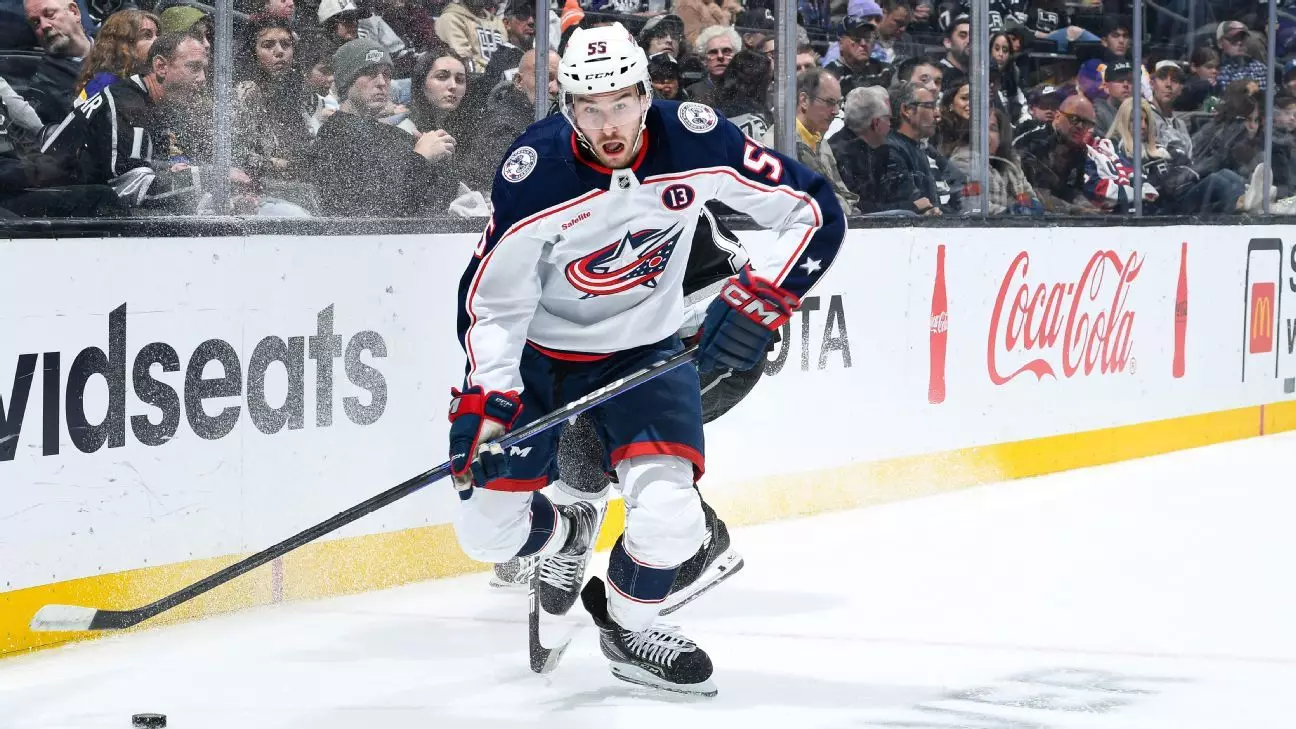In the often volatile world of professional hockey, trades can significantly alter the trajectory of a team’s season and future. The recent exchange between the Columbus Blue Jackets and the Minnesota Wild involving David Jiricek, the former No. 6 overall pick, is a telling example of how strategic moves in the NHL lead to a potential win-win situation for involved franchises. By assessing this trade piece by piece, we can uncover its depth, advantages, and potential ramifications for both teams.
Understanding the Trade Dynamics
The Columbus Blue Jackets sent Jiricek along with a 2025 fifth-round pick to the Minnesota Wild. In return, they acquired a bevy of draft picks, including a top-five protected 2025 first-rounder, a 2027 second-round pick, a 2026 third-round pick, and defenseman Daemon Hunt. At first glance, this proposal appears significantly beneficial to the Blue Jackets, furnishing them with critical assets while tossing in a player with immediate utility in Hunt.
However, for the Wild, acquiring Jiricek is about cultivating a star defenseman. The impetus for this trade likely stemmed from the Wild’s recognition of Jiricek’s potential—evidence of which can be traced to his impressive performances in the American Hockey League (AHL), where he maintained an offensive presence with 60 points in 88 games. Given the established defensive core and the necessity for youth, his addition could play a pivotal role in cementing the team’s future.
Current Defensive Structure and Future Prospects
The Minnesota Wild’s current defensive lineup, bolstered by players like Brock Faber—who was recently highlighted for his accolades—demonstrates a strong foundation. However, recognizing the increasing age of significant players like Jared Spurgeon and Jonas Brodin, the front office understood the need for a fresh influx of talent. The fact that Jiricek brings size and offensive capabilities could usher in a new era where the defense isn’t merely reactive but rather proactive and aggressive.
What may pose as a dilemma for the Wild is balancing the seamless integration of Jiricek into their system while maintaining their existing momentum. Given that they have not only a competitive edge within the league but also an advantageous contract situation, the organization could afford to be patient. This strategy allows both Jiricek and the team’s established players to grow without the pressures and burdens of immediate performance.
Turning our gaze to the Columbus Blue Jackets, the trade perhaps reflects their current struggle for identity within the NHL. As they hover close to both playoff contention and the prospect of a poor season record, the management appears to be adopting a dual approach—securing present talent while simultaneously accumulating future assets. General Manager Don Waddell’s track record of successful drafting during his tenure with the Carolina Hurricanes has evidently influenced his strategy in this recent deal.
The added draft picks offer the Blue Jackets numerous opportunities for nurturing youth and fostering a pipeline of talent—especially pivotal in the subsequently near future. Furthermore, Hunt gives them instant capability on the ice, enabling a smoother transition as young, developing players like Corson Ceulemans and Denton Mateychuk rise through the ranks. However, the question remains as to how effectively these layers of youth will synergize to form a competitive squad in a demanding league.
Ultimately, while reactions to trades are often dictated by immediate on-ice effects, the true value rests in their long-term outcomes. For the Blue Jackets, the focus on restitution through accumulated draft picks may lead to fruitful results in the future. In contrast, the Wild could significantly evolve their defensive capabilities by integrating Jiricek into a competitive context.
A careful analysis of such transactions reveals that management’s foresight defines how effectively prospects and experienced players can coexist. The Jiricek trade, with all its complexity and potential, serves as a tangible example of how teams can recalibrate and prepare for the next steps in their evolution while recognizing the profound importance of both individual talent and collective synergy.
In summation, this trade may not just be about immediate returns; rather, it embodies the larger narrative of adaptability in professional sports—a reflection of ambition, strategy, and the relentless pursuit for excellence. The unfolding journey for Jiricek and both teams holds significant intrigue as the NHL landscape continues to shift and reshape.


Napsat komentář